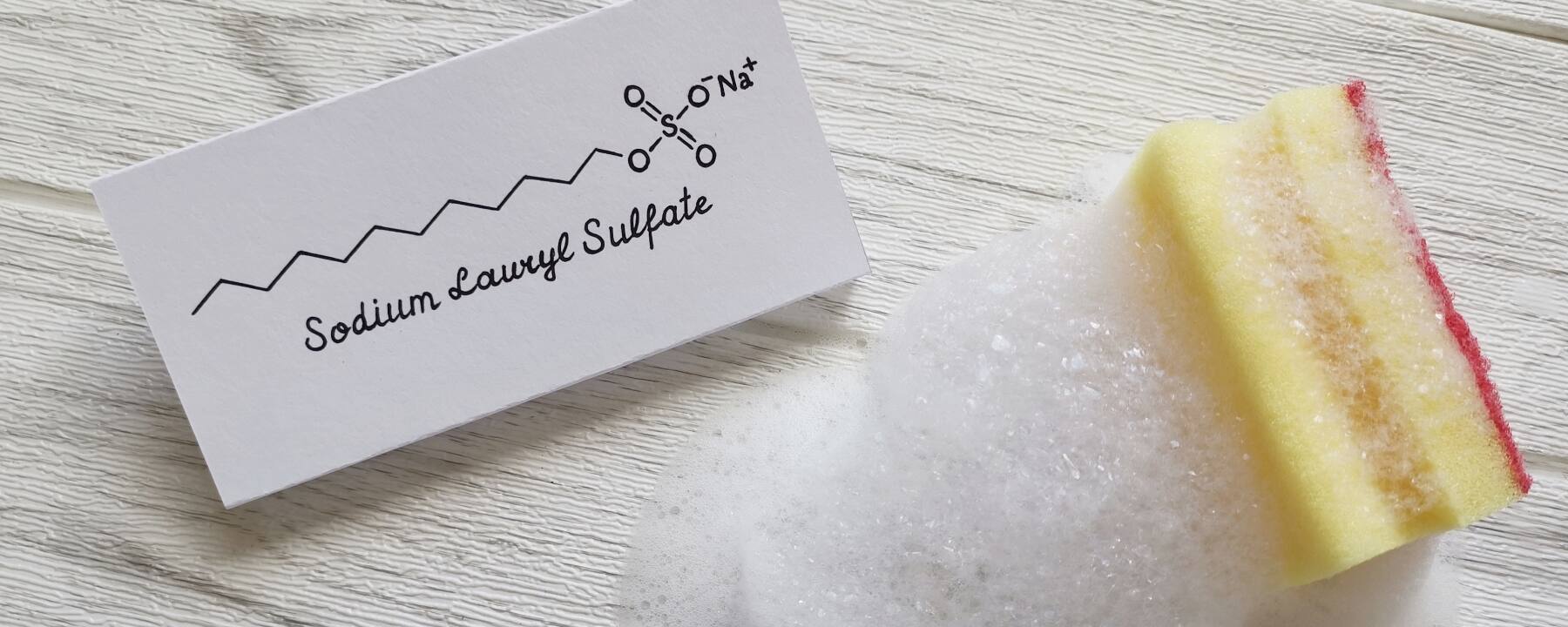
The world of sulfates
Sparkling clean and beautifully foamy
They are the cleaning agents for personal care. They clean and dissolve grease and dirt. Surfactants and sulfates. Foaming beautifully.
If you mention the word surfactant, most people will understand exactly what you are talking about. You don't have to be that familiar with chemistry, formulas or formulations. Soap probably is the best-known surfactant and can be found in every household.
Surfactants are chemical substances that have both water-loving (hydrophilic) and fat-loving (lipophilic) properties. What does that mean in practice? Oil and water don't mix very well at parties. You cannot blend the two without assistance. You can see it when you cook spaghetti. Add a trickle of olive oil and its droplets will dance through the water but will not mix with it. Or maybe look at the surface tension of water. Take a glass of water and place a normal sponge on the water's surface. It will float on top.
Once surfactants are brought into play and get involved, then things start to change. Their specific structure, both hydrophilic and lipophilic, makes the surfactant active on the surface. This means that they create a link between two substances such as oil and water and organize themselves into special structures such as micelles. This special ability gives them unique properties. Without surfactants, shampoos wouldn't foam or cleanse, and creams for aging gracefully wouldn't be stable.
The following types of surfactants, also known as cleansing substances, exist. Their electrical charges vary:
- Anionic
- Cationic
- Non-ionic
- Amphoteric
The types also vary in their foaming behavior, their cleansing abilities, and their skin compatibility.
Let's now look at the sulfate surfactants, which is a subgroup of surfactants. Sulfate surfactants are anionic surfactants because the sulfate group has a negative charge. They are easy to rinse off and are ideal for cleansing. The two sulfate surfactants most commonly used in personal care products are SLS and SLES.
SLS stands for sodium lauryl sulfate and SLES for sodium lauryl ether sulfate (or also sodium laureth sulfate). SLES is more hydrophilic than SLS. This gives SLES properties that SLS does not have. These include better water solubility, less irritation to the skin and being less susceptible to harder water.
What makes sulfate surfactants so special and so valuable?
Simply put, it is all down to their outstanding abilities. Their cleansing power, combined with the ability to produce consistent foam, make them perfect ingredients for cosmetics. Shampoos, shower gels, liquid soaps all exploit the cleaning effects of sulfates. Without compromise.
One benefit that is easy to forget: even a small amount of salt increases the viscosity of a product containing sulfate surfactants, making it thicker. This means that there is no need for more ingredients like additional thickeners.
Their general value for money and the variety of different sulfate surfactants are not entirely unimportant factors either. They are easy to work with in combinations as they are compatible with a wide range of ingredients. This means that manufacturers have many options available to produce very stable formulations. When we compare them to sulfate-free surfactants, we see that these other surfactants need to be added to products in much higher concentrations to achieve a comparable performance. As a result, and because other, more complex manufacturing processes are necessary, the cost estimates are inevitably higher.
But are sulfates sustainable?
Yes, sulfate surfactants are sustainable. First, they are derived primarily from renewable resources, such as fatty alcohols from palm kernel oil and coconut oil. For example, non-ethoxylated sulfate surfactants can be of 100% natural origin. This is the case if natural fatty alcohols are used. Furthermore, palm kernel oil, although sometimes assumed to cause deforestation, can be sustainably produced by following the terms laid down by the Roundtable on Sustainable Palm Oil (RSPO).
The production process of sulfate surfactants is also sustainable, as it produces little waste and low CO2 emissions. Sulfate surfactants do not accumulate in the environment, as they are easily biodegradable.
We reported on possible effects on health and the body in another article, but there is one topic we would like to return to once more: the subject of hair loss. Since sulfates play an important role in hair shampoo in particular, we would like to lay a myth to rest. Sulfate surfactants are not responsible for hair loss. Even if there may be web pages and blogs saying so, there is no scientific evidence here.
Apart from natural hair loss, there are other types with varying degrees of severity. The causes of hair loss, or lack of growth, can be genetic, related to illness or self-inflicted. More information here.
The German Association for Skin and Allergy Support lists some other causes:
- Stress
- Diet
- Prolonged malnutrition
- Side effects of disease (such as infections, psoriasis)
- Medication (e.g. antibiotics)
- Chronic diseases (e.g. diabetes, thyroid disorders) t
- Anemia
- Metabolic disorders
- Cancer
- Poisoning
- Hormonal changes
In other words, you don't need to change your shampoo that contains sulfate surfactants if you are worried about your hair thinning.
By the way, a cosmetic product is not necessarily defined by one specific surfactant or one specific sulfate. Different surfactant systems are often combined to achieve the desired effect. With the wide range of products on offer and all the alternatives on the shelves, everyone can find the right product for themselves.
It is better to experiment than read the theory. Just bear in mind: Sulfates are far better than their reputation.


